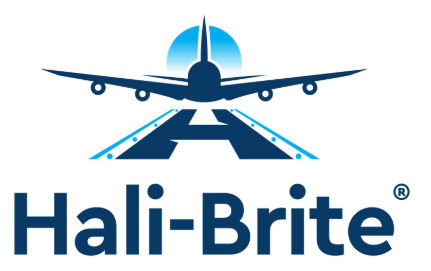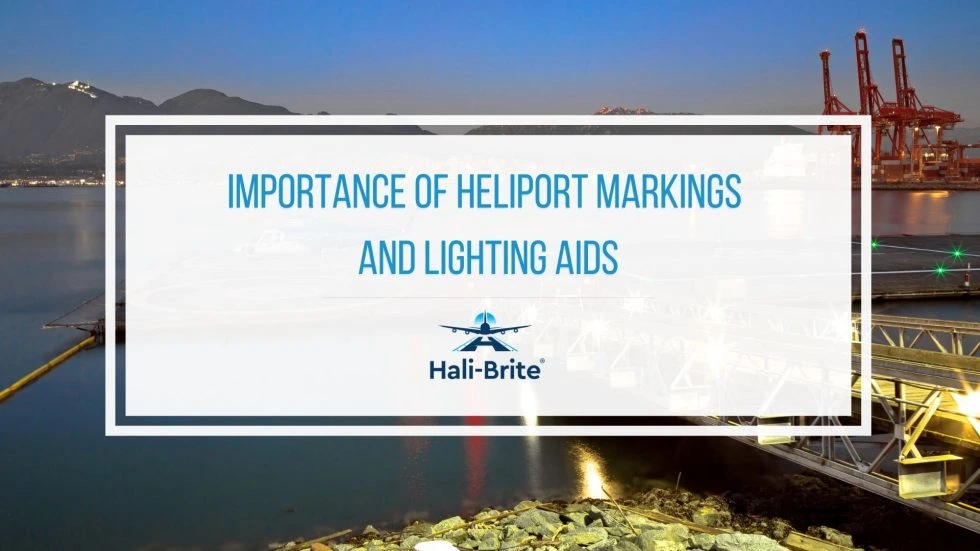Just as a lighthouse guides sailors and ships to safety, heliport markings and lighting aids also serve as navigational guides to pilots and aircraft. Heliport markings and other lighting aids help make the entire facility safe for aircraft and people. Its purpose is to keep everyone away from danger and warn against possible accidents and mishaps, especially in low visibility conditions and at night.
Since lighting and markings are essential assets and parts of a heliport, the Federal Aviation Administration (FAA) sets guidelines for its requirements and dimensions. Hence, lighting and markings must comply with specific aeronautical standards to allow heliports to operate. Each lighting and marking has functions and roles in an effort to better operationalize the facility. This article breaks down all the major elements involving heliport markings and lighting.
- What Is a Heliport?
- Similarities and Differences Between Airport, Heliport, and Vertiport
- Heliport Markers and Markings
- Heliport Lighting
- Why Heliports Need Markings and Lighting Aids
What Is a Heliport?
A heliport, like an airport, is a pad or space used for the takeoff and landing of vertical lift aircraft such as helicopters. However, unlike an airport, a heliport is smaller in size and has fewer facilities, such as fuel or hangars. A heliport can be located on top of a building, on water, in open areas, or as part of an airport. It can be composed of a single landing pad or several helipads with smaller runways, and often will accommodate one helicopter at a time. A heliport can provide quick transportation to avoid land traffic, and/or be used for medical and rescue emergencies.
Similarities and Differences Between Airport, Heliport, and Vertiport
An airport, heliport, and vertiport are similar in terms of the following:
- Have touchdown and lift-off (TLOF) area
- Have final approach and take-off (FATO) area
- Have visual aids and markings as navigational guides
Meanwhile, they also differ in several factors, including the following:
- Airports have huge airspace with many runways and passenger terminals. Meanwhile, heliports and vertiports are smaller in size with limited facilities.
- Airports cater to air carriers or passenger planes. Heliports and vertiports, on the other hand, cater to smaller aircraft like vertical take-off and landing (VTOL) aircraft, air taxis, and Advanced Air Mobility (AAM) vehicles that facilitate the fast movement of goods and people.
- Heliports are not marked the same way as airports. Heliports are oriented with an “H” to indicate the approach and departure directions. Meanwhile, airport runways are labeled according to compass bearings.
Heliport Markers and Markings
The various heliport markers and markings have different functions. Here are some of them:
“H” Marking
This marking is essential because it indicates that the area is a heliport. It also assists the pilot in the preferred approach of departure and landing.
TLOF and FATO Perimeter Marking
These markings define the parameters or the surface area for the pilot to prepare for TLOF and FATO.
Maximum Allowable Mass Marking
This marking indicates the maximum helicopter weight that can land on the heliport. This marking is especially useful for heliports on top of a building, ship, or helideck.
Heliport Lighting
Rotating beacon
A rotating beacon, or an aeronautical beacon, helps pilots locate the helipad for landing. It is frequently positioned on top of a tall structure, like the control tower, so pilots can see it clearly as they approach the heliport.
TLOF – perimeter lights
The TLOF-perimeter light is a steady omnidirectional green light used to identify the TLOF area. These lights define the perimeter area in elevated, limited-space heliports, such as those on top of buildings.
Signs & Obstruction Lighting
This lighting detects and illuminates any obstacles within and around the FATO. This lighting assists the pilot in steering clear of potential obstacles such as tall towers or buildings.
Why Heliports Need Markings and Lighting Aids
Heliports can be located atop a building, on a ship, on unprepared open fields, and even on golf courses. Such locations can be difficult and dangerous during take-off and landing operations due to the limited space and/or complex surface conditions and circumstances. Thus, markings and lighting offer the extra safety measure essential in guiding pilots and avoiding danger. Furthermore, heliport markings also help identify the facility as an operating heliport.
Heliport Lighting At Hali-Brite
A simple broken beacon light or a defective obstruction light could spell disaster in heliports. We at Hali-Brite know that there’s no room for inefficiency when it comes to safety. Our lighting equipment and markings are of the highest quality and standards.
We have been combining innovation and efficiency to provide FAA-certified airfield equipment and lighting systems since 1979. Reach out to us for your needs, and we’d be happy to assist you any time of the day.


